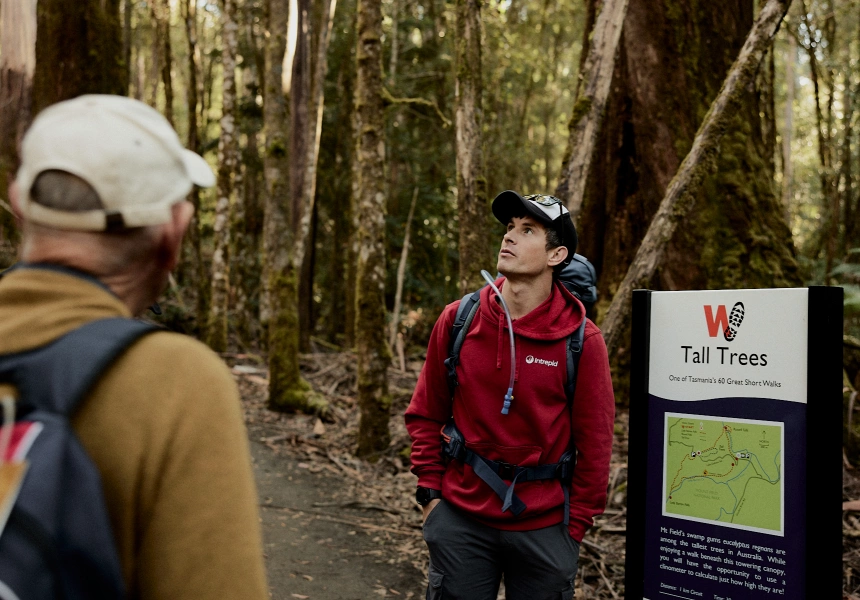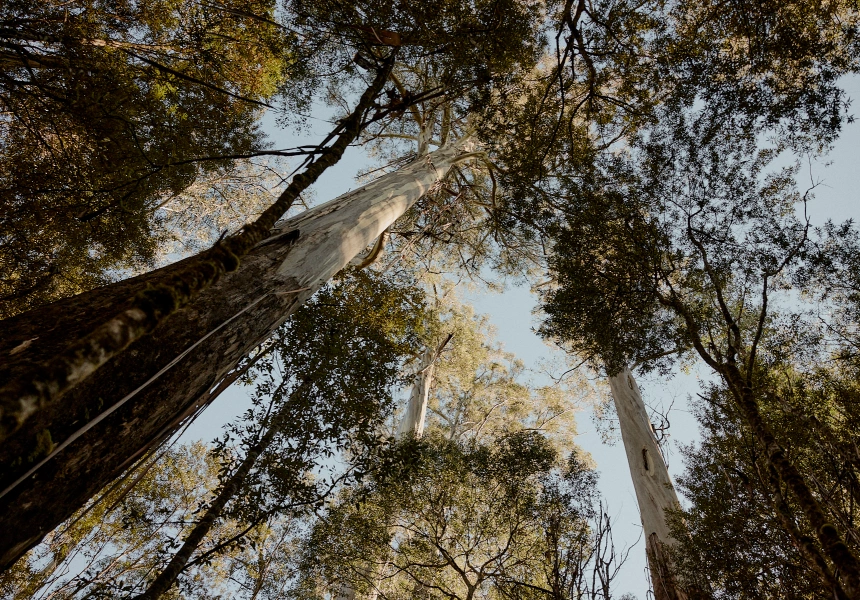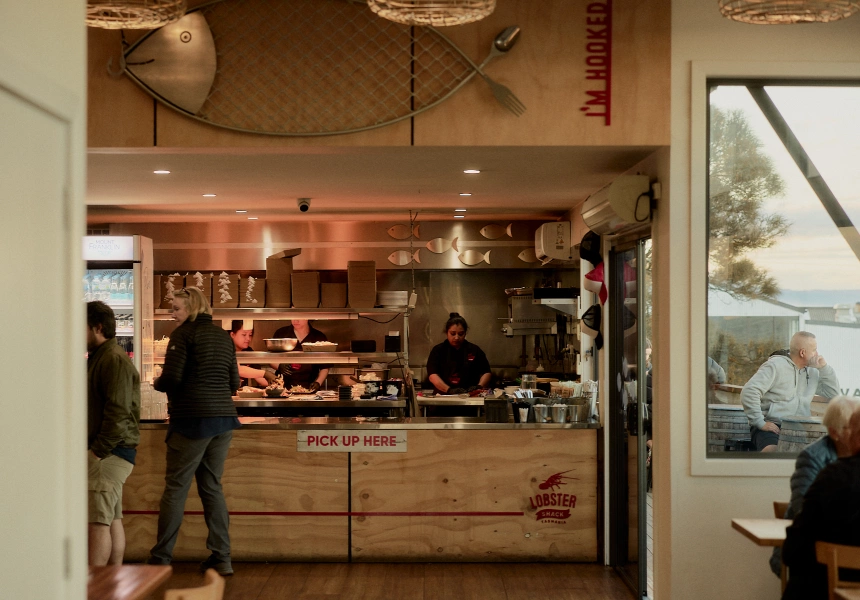My neck’s stiffening rapidly. I’m not used to looking up this much – and certainly not 100 metres up, to where the surrounding mountain ash trees finally give way to sky. Eucalyptus regnans, to call them by their scientific name, are endemic to Victoria and Tasmania and rate as the fourth tallest species in the world, behind the likes of California’s famous redwoods. Pin straight and tall enough to make you feel like a poorly scaled model in a diorama, they’re bloody spectacular. And the hundreds of specimens we’re strolling through are likely to be 400 years old, we’re hearing.
I’m learning all this from Larry, the softly spoken yet incredibly knowledgeable guide leading us on Intrepid’s Highlights of Tasmania tour. It’s day one. Earlier this morning 12 of us met for the first time in Hobart, piled into a minibus and drove here, to Mount Field National Park, for the first of many guided walks. The aptly named Tall Trees walk is just a kilometre long and gives the newly formed group ample time to bond ahead of five more days together.
With the exception of two couples, everyone is travelling solo. There are six Aussies, three Americans, one Kiwi, one Brit and one Swiss. Everyone has an interesting story to share and quickly finds “their people” within the group. By the walk’s end, at the spectacular Russell Falls, we’re ready for what will be the first of several group photos. Larry obliges.
Never miss a moment. Make sure you're subscribed to our newsletter today.
SUBSCRIBE NOWBack in the bus, we keep heading west and our mic’d up guide delivers relevant trivia in sporadic, entertaining bursts. History, botany, agriculture, wildlife – there doesn’t seem to be a subject he isn’t at least a little versed in. At one point someone asks about the perfect lines of trees out left, and we get a lesson on bluegum plantations and the history of logging in Tasmania.
By mid-afternoon we start a winding descent into Queenstown, where mining has stripped the surrounding hills of soil and flora. It’s a barren, Mars-like monument to humanity’s most ruinous tendencies. Larry says the river that flows through the town is Australia’s most polluted, with minimal DNA fragments detected in water samples. Everyone should visit this grim yet significant destination to understand the value of conservation.
That the Greens, Australia’s biggest environmental party, sprang from the island state makes profound sense. There’s so much here worth protecting – and some perturbing examples of what happens when you don’t. The two extremes exist side by side, and it makes the experience cut that much deeper. It’s an unexpected – yet extremely important – lesson we otherwise might not have learned without the Intrepid tour or Larry’s knowledge.
The remote and sparsely populated west coast best illustrates lutrawita/Tasmania’s Jekyll and Hyde tendencies. But they’re everywhere. Rugged to flat, cold to warm, wet to dry, windy to still, brooding to joyous, spoiled to pristine. Over the next five days, the state flips these switches on us constantly, and it’s kind of thrilling. Circumnavigating the island, with stops in Strahan and Bicheno, is the best way to witness these dramatic contrasts – and that’s exactly what we do on the tour.
New Norfolk
Located just 30 minutes out of Hobart, this community-focused town is our first stop, before even Mount Field National Park. We arrive just in time for the weekly farmers market (Saturdays, 8am–2pm), stocking up on fruit and snacks for the days ahead. Larry lets us loose to grab a coffee, browse the shelves at Black Swan Bookshop and pick up snazzy stationery at Flywheel.
leeawulenna/Lake St Clair
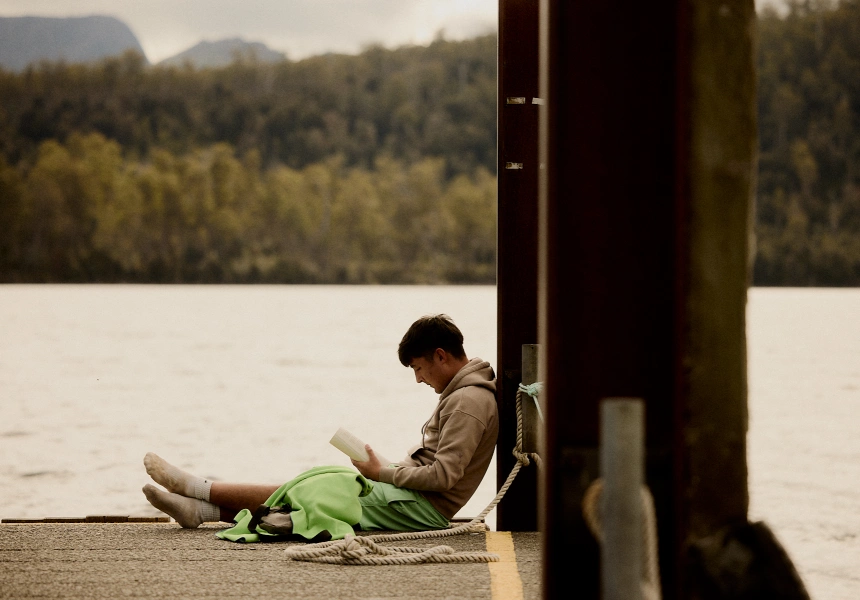
Famously home to luxe hotel Pumphouse Point, this freshwater lake bottoms out at 215 metres, making it the deepest in the country. Our stop here is brief, more a chance to stretch legs and use the toilets, but everyone can’t help convening on the jetty to admire the dark, brooding lake. Paul from the UK shows us an app he’s downloaded where people report platypus sightings – Lake St Clair is a hotspot, but we sadly don’t get lucky (we will later).
Strahan

We end the first day at the quaint seaside town, just 45 minutes’ drive from Queenstown. It couldn’t be more different to its blasted, eerie neighbour. Said to be Australia’s second-largest natural harbour (after Sydney), it bustles with small tour boats, commercial fishing ships and visiting tourists. Larry has handily booked dinner for us, and the group shares its first sit-down meal, discussing everything from ChatGPT to local convict histories over pizzas and parmas. We’re an eclectic mix, but everyone’s here for the same reason – to see the best of Tasmania, and so far it feels like we’re on the right track.
The next day two people split off for an optional cruise up the brooding Gordon River, while the rest of us tackle a three-hour return walk to nearby Montezuma Falls. As we head back towards Strahan, Larry flexes his considerable DJ skills, pumping Kool & the Gang’s Celebration, the Killers’ Mr Brightside, Queen’s Bohemian Rhapsody and other triumphant tunes to recognise our 11-kilometre achievement. It’s like Coles Radio in the best way possible. On the way, we stop at Henty Dunes and the expansive Ocean Beach. The falls are gorgeous, but the 15-kilometre stretch of dunes is a particular highlight for me. We trudge to the top of the 30-metre peaks for killer views back inland. Next time, I’ll joy-ride back down on a toboggan hired in Strahan.
Cradle Mountain-Lake St Clair National Park
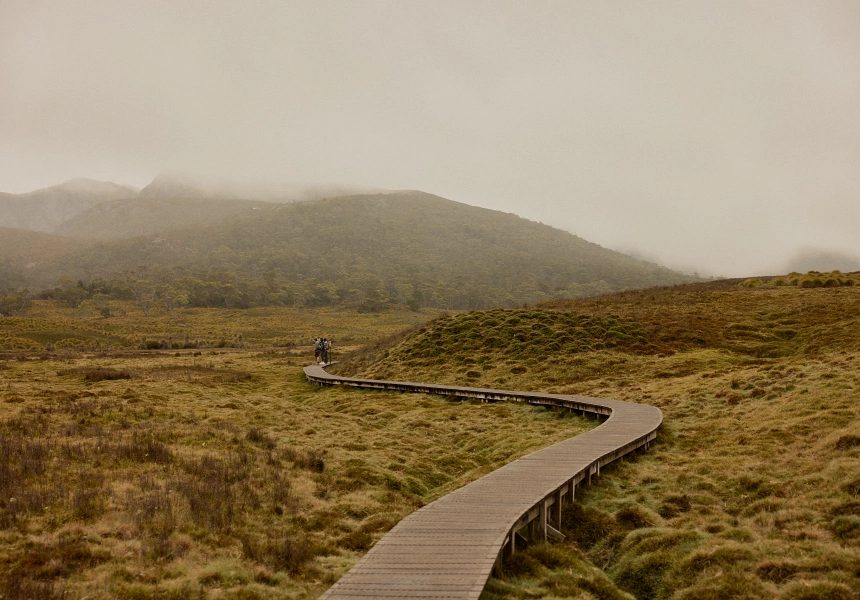
Up to 250,000 people a year visit this alpine national park and world heritage area to hike among 1000-year-old King Billy pines and chilly lakes while spotting wombats and other wildlife. It’s supremely set up, with architecturally designed visitor centres, convenient shuttle buses and wide, well-maintained boardwalks that complement the more hardcore trails, including the six-day, 65-kilometre Overland Track, which Larry completed recently. There are numerous routes through the park.
Larry leads the less confident hikers among us on a relatively flat walk, handling navigation and carrying first-aid supplies. The rest of us go our own way. I charge up the mountain with our photographer, Brook, on a three-hour trip, and we’re rewarded with sweeping vistas of the lush park and its many lakes. As a light drizzle begins to set in, we hightail it back to Cradle Mountain Lodge – a luxury retreat that’s exactly what we need after the long day of hiking – and settle in front of its cavernous open fire for a well-deserved beer. Several members of the group have had the same idea, and together, we recap our various routes with weary satisfaction. Where’s Larry’s upbeat DJing when you need it?
Launceston
We spend the third night here, arriving in the late afternoon. Hobart is the bigger city, with more eating and drinking options, but Launceston’s no slouch. Larry is full of recommendations, and the tour allows us all some time to explore the city and do whatever we want. Everyone splits off with new friends and acquaintances to sink pints at craft beer destination Saint John, find a pub meal or even show up for a booking at the renowned Stillwater restaurant. The next morning we do the same for breakfast, hitting our picks of bakeries and cafes before reconvening for the drive to the east coast.
The Bay of Fires
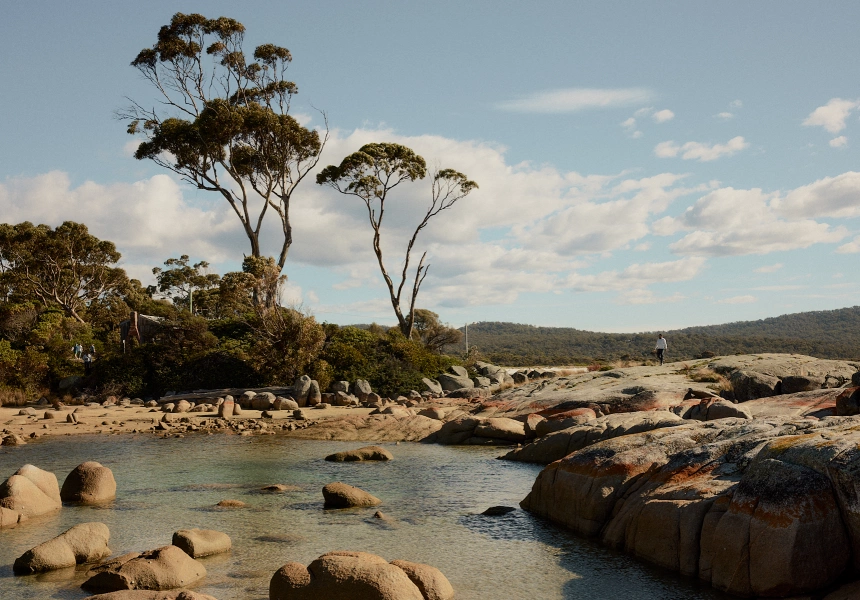
This striking 50-kilometre stretch of coast, with its distinctive orange lichen-encrusted granite boulders, is possibly Tasmania’s most iconic sight. It’s a bit over two hours from Launceston, but we make an unscheduled stop in a small town called Scottsdale, where Larry somehow knows of four platypuses living in two dams right next to the highway. The group, including the Aussies, promptly loses its collective mind watching the little animals lazily surfacing in the sun. You can’t get this from a guidebook or even Google Maps. As we get closer to the bay, Larry explains how it got its name: a certain Captain Tobias Furneaux sailed by in 1773 and saw the local palawa people’s fires on the beach. We tear off our shoes and socks and spend a sunny afternoon hopping among the rocks.
Bicheno
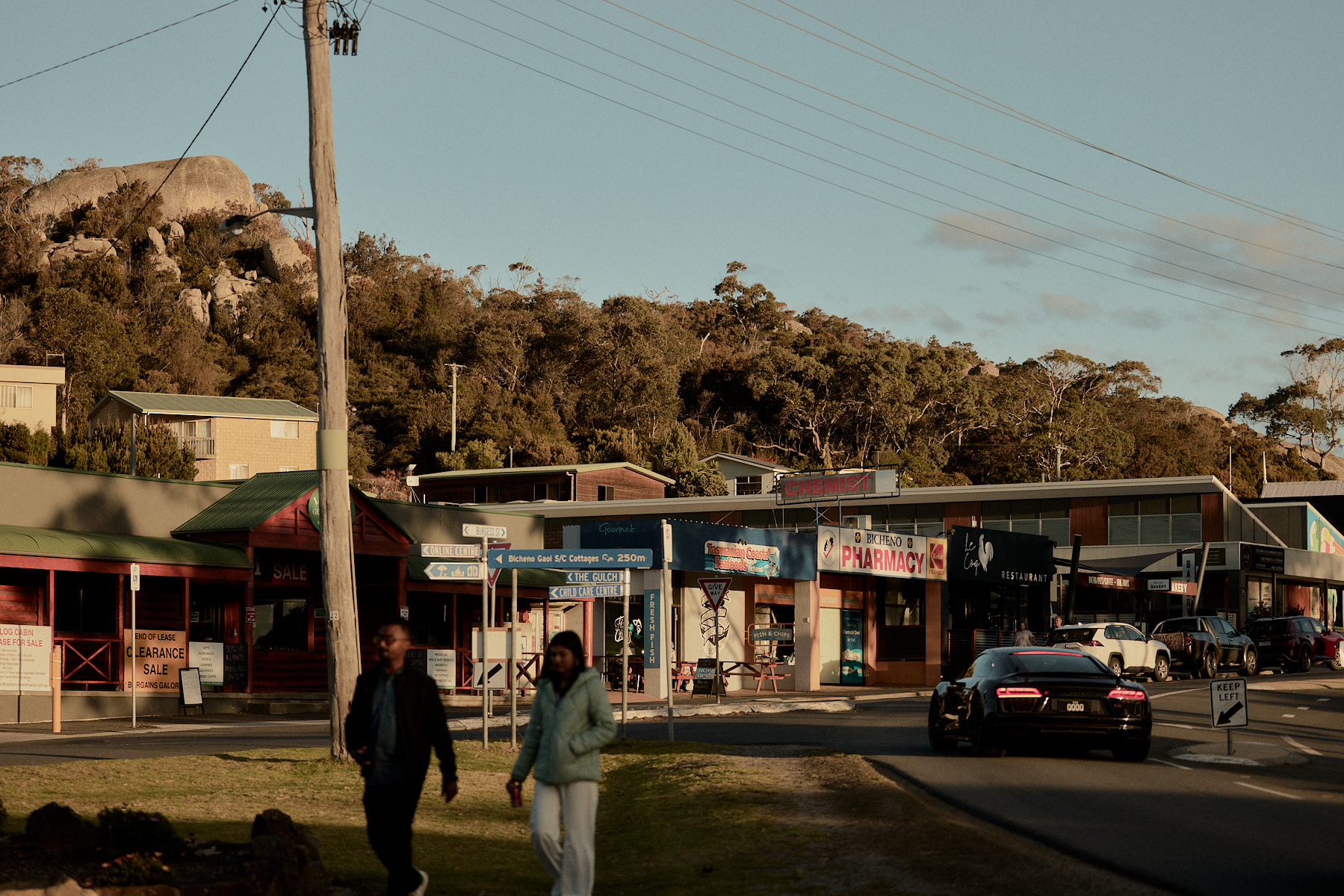
Strahan’s east-coast counterpart has a similarly lively feel, with plenty of young families strolling the streets alongside the tourists. We spend two nights soaking in the community vibes, with laughter-filled group dinners at Food & Brew and Lobster Shack, scoffing excellent lobster rolls and drinking in views of the adjacent surf – an angry, sloshing beast. Two of the group split off again to take an evening penguin tour organised by Intrepid, but on the way back from dinner, the rest of us gleefully spot one of the hapless little creatures waddling the car park. In the mornings we grab coffee and house-made pastries at Little Bay Patisserie.
Freycinet National Park
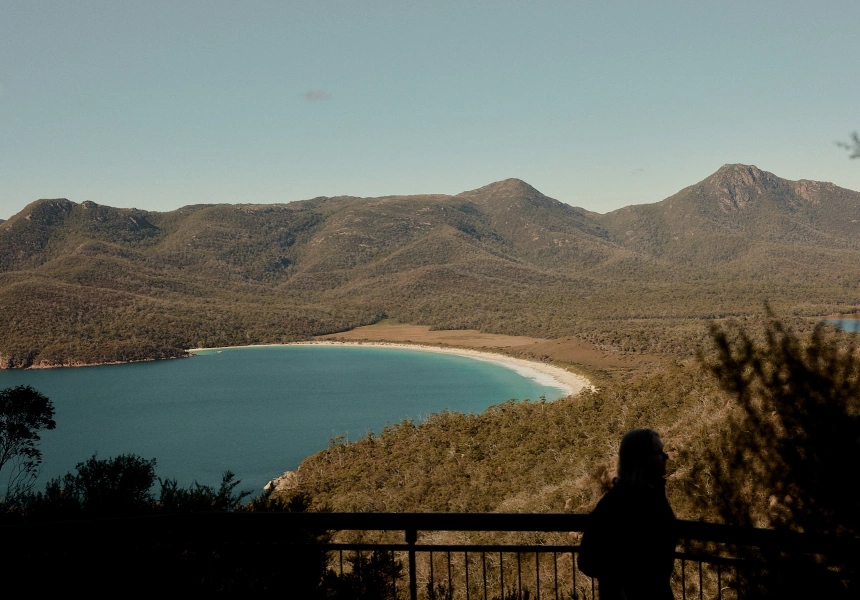
Named after French navigator Louis de Freycinet, this 170-square-kilometre peninsula is one of Australia’s oldest national parks, founded in 1916. Its white-sand beaches and pink- and red-tinged granite formations, known as the Hazards, must have been an obvious candidate for preservation back in the day. The romantic-sounding Honeymoon and Sleepy bays are nice, but the graceful curvature of Wineglass Bay makes it the area’s most-visited attraction. It’s a six-kilometre return trip from the car park, and Larry again leads the less experienced hikers there and back while the rest of us tackle slightly more ambitious routes. We later share lunch and surprisingly good coffee at Geographe in Coles Bay, followed by sparklingly fresh oysters at Freycinet Marine Farm.
kunanyi/Mount Wellington
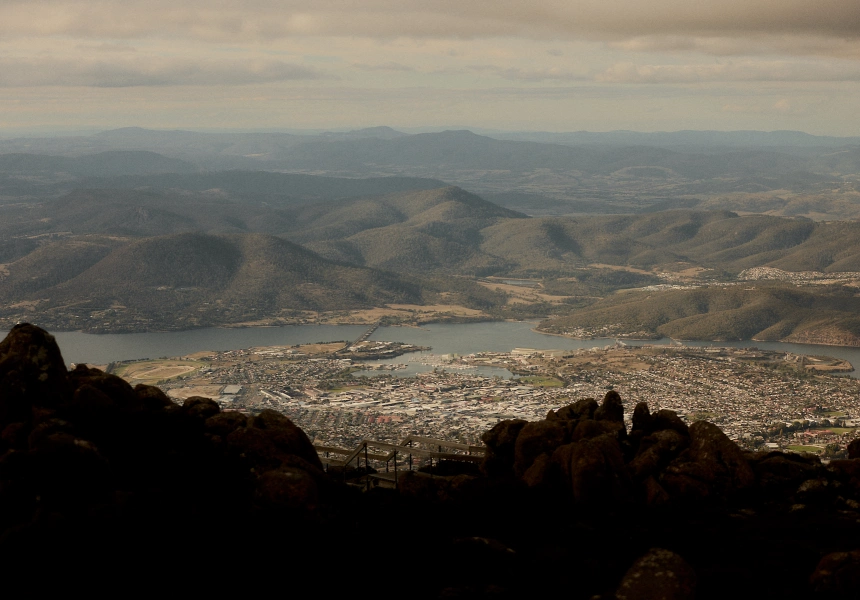
Our last day begins at small-scale open air zoo Natureworld, where we see quolls, wombats, wallabies, echidnas and Tasmanian devils up close, before heading to the quaint town of Richmond for lunch. But the main event is our fifth and final walk (or is it a hike?) up kunanyi, the imposing monolith that overshadows Hobart. It offers unrivalled views of the little city and the mighty River Derwent. Larry drops us back in town and, after six full days together, we exchange details and say our goodbyes – to meet on another tour, perhaps.
This article is produced by Broadsheet in partnership with Intrepid. Intrepid’s Highlights of Tasmania tour is a six-day, five-night fully guided trip that includes all transport and accommodation. Starting and concluding in Hobart, it covers all of the locations above (and more). Find out more here.

